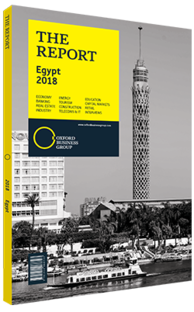Egyptian cotton returns to world markets
The renowned Egyptian cotton industry, considered the international luxury standard for centuries, is experiencing a renaissance after several challenging years. With prices and global demand both on the rise, Egypt is hoping to ride the wave of this renewed popularity to a lucrative export market.
Quality Control
As reported in the international press, in 2016 Egypt’s production of cotton hit a more than 100-year low, a decline that started with the political upheaval of 2011, and which has led to loosened quality assurance regulations and a subsequent falling-off in overall quality. The government has taken steps to remedy this and put cotton on the road to recovery. In 2016 all but the highest-quality cottonseed crops were banned, shrinking the area under cultivation for cotton to around 130,000 acres, which allowed growers to promote quality over quantity. The Ministry of Agriculture and Land Reclamation (MALR) also instituted additional crop testing, efforts of which seem to be successful so far. As noted by the US Foreign Agriculture Service, quality analysis results from the Central Arbitration and Testing General Organisation have demonstrated improvement in cotton produced in 2016/17 compared to the crop in 2015/16.
Branding Focus
This quality-control issue is especially important given that the Cotton Egypt Association (CEA), the entity that provides an official logo to suppliers of 100% Egyptian cotton, estimates that about 90% of global supplies branded as Egyptian cotton in 2016 were fake. Following this announcement, internationally, retailers have begun to more closely monitor their product labels, with the CEA licensing manufacturers through a comprehensive DNA analysis programme to certify authenticity and merit the use of the official Egyptian cotton logo. One of the most prominent scandals broke in August 2016, when US retail chain Target accused Indian textile manufacturer Welspun India of using cheaper, non-Egyptian cotton in bed sheets and pillowcases, while labelling products as 100% Egyptian cotton. This crackdown on false products – Welspun confirmed that the allegations had merit – has led to increased scrutiny for guaranteed quality.
After a thorough examination of the company’s supply chain in 2017, the CEA granted Welspun permission to use the logo until 2022. In February 2017 the two organisations also signed a deal to jointly promote the Egyptian cotton logo across global markets, with Welspun announcing a $3m marketing effort.
Doubling Down
With new quality assurance systems and revitalised marketing efforts in place, the MALR announced a goal of doubling cotton production during 2017/18. In 2016/17 the area planted almost doubled to around 220,000 acres, and is forecast to rise up to 500,000 acres in the next two to three years.
Final export tallies are expected to reach 38,000 tonnes in 2016/17, representing a 19% uptick from the previous year. In addition, the Ministry of Trade and Industry has signed a two-year, $1.7m cooperation agreement with UN Industrial Development Organisation and the Italian Development Cooperation to increase the added value of Egypt’s long and extra-long staple cotton, and improve the performance of both farmers and institutional players.
Upward Prices
The rise in prices has also been encouraging as demand and production has increased. After the November 2016 devaluation, local cotton prices reportedly grew to about LE3200 ($211) per qintar (160 kg) from LE 1200 ($79) in previous months. In 2016/17 farmers could sell long staple crops at LE2700-2750 ($178-181) per qintar, 116% higher than the indicative prices announced by the government of LE1250 ($82). As for short- and medium-staple varieties, farmers sold at LE1900 ($125) per qintar, 73% above the government’s indicative prices of LE1100 ($73). The return of Egyptian cotton to world markets could provide an opportunity at a time when Egypt is seeking not only to boost export revenue, but also to revive the branding of its most famous luxuries.
You have reached the limit of premium articles you can view for free.
Choose from the options below to purchase print or digital editions of our Reports. You can also purchase a website subscription giving you unlimited access to all of our Reports online for 12 months.
If you have already purchased this Report or have a website subscription, please login to continue.

